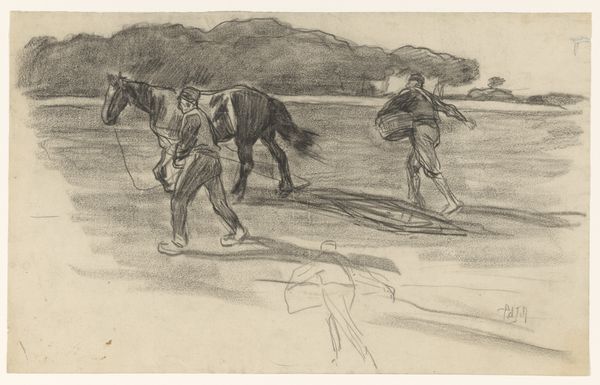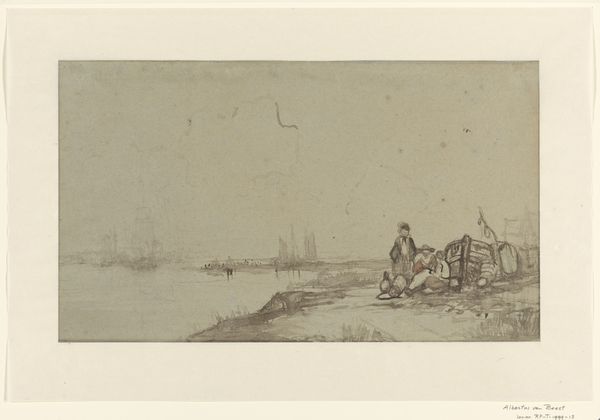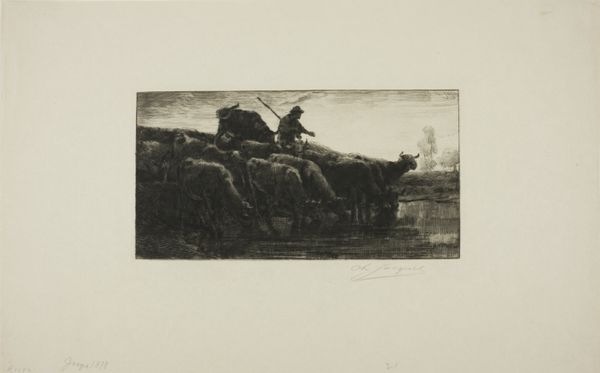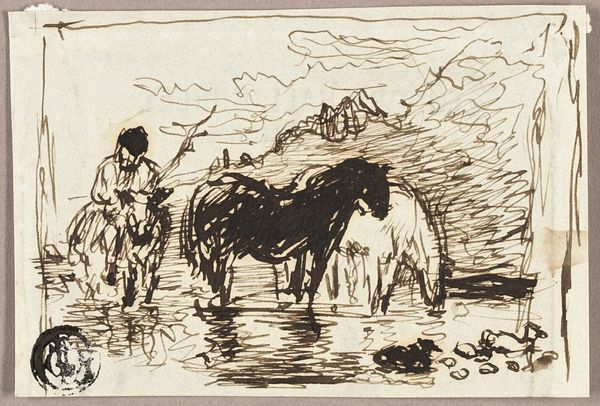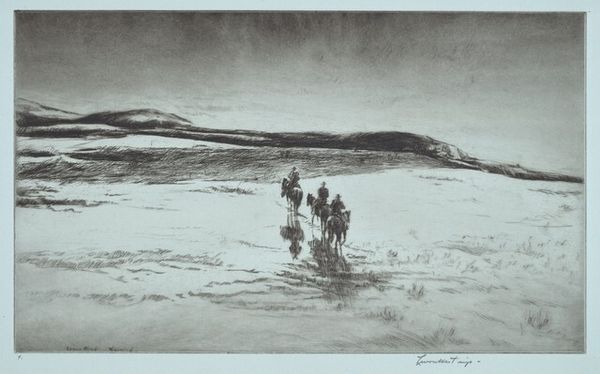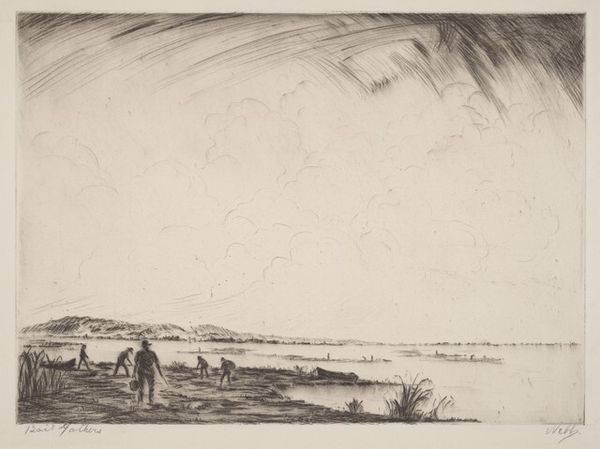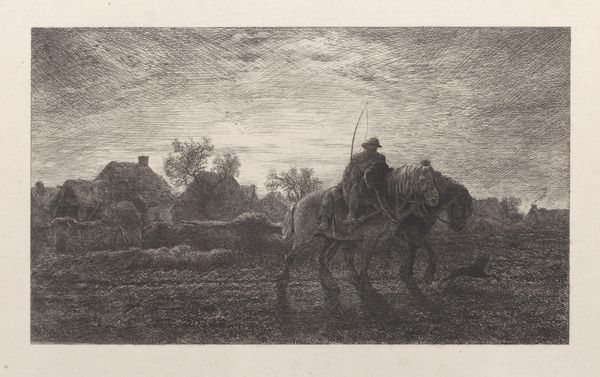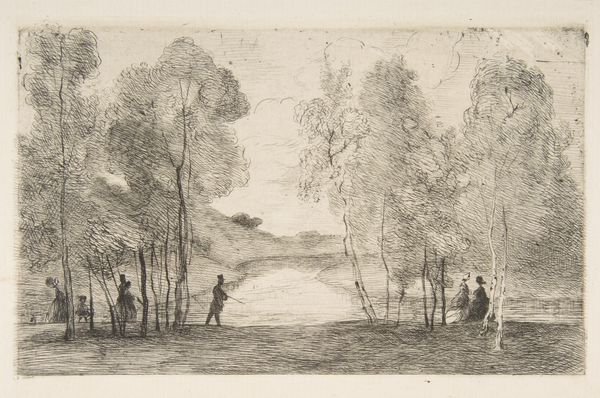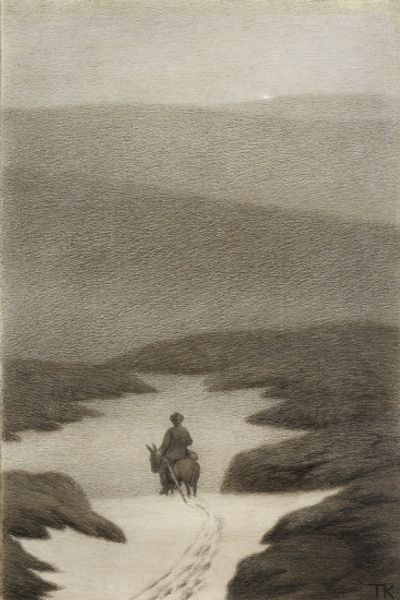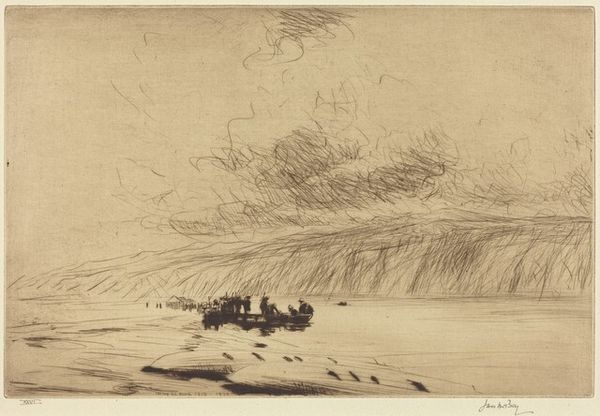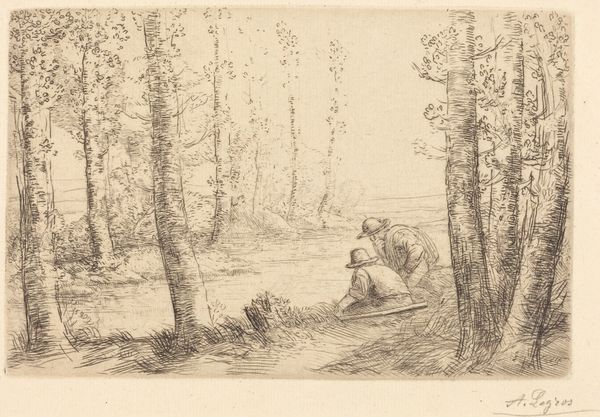
Dimensions: 82 × 159 mm (image); 124 × 189 mm (plate); 262 × 394 mm (sheet)
Copyright: Public Domain
Curator: Before us, we have Charles-François Daubigny’s etching, "The Dray Horses," created in 1850. It’s part of the collection at the Art Institute of Chicago. Editor: The mood is immediately striking—a palpable sense of melancholic resignation permeates the entire composition. The tonal range, while limited by the etching process, still manages to create an atmosphere of damp, quiet labour. Curator: Absolutely. Note how Daubigny uses line weight and density to define form and space. The shallow depth of field throws the background into a soft focus, emphasizing the immediate foreground where the horses are wading through the water. Editor: For me, the horses themselves evoke ancient symbolism of burden and strength. Think of their historical role—powering agriculture and trade. They carry more than just visible weight; they bear the weight of human enterprise and endurance. Curator: The figures too – consider the figure riding the lead horse and the herder behind the second set of dray horses. Compositionally, Daubigny has cleverly placed these figures on a receding diagonal axis, pushing our gaze towards the horizon line. Editor: And this receding placement also contributes to an implicit narrative: it is not merely a pastoral scene, but is emblematic of a long, cyclical pattern of work in rural life. Notice how these characters are somewhat stooped—the human figure subjugated by economic reality and almost blurred as he's set against the horizon. Curator: I agree completely; yet observe how the subtle nuances of light and shadow on the water surface creates textural interest which prevent the work from becoming overly bleak, as well the expressive lines used for depicting sky which contributes to dynamism in its composition. Editor: Yes, even as the composition guides us toward meaning of endurance, the symbols do seem less triumphal and speak to something that is a constant, perhaps somewhat tragic reality of existence. Ultimately it transcends the medium of etching and speaks universally. Curator: Precisely. And perhaps it invites us to reflect on the changing values attributed to these animals and how, from vital labourers, they became figures of romantic rural nostalgia in visual art. Editor: I appreciate that it offers a perspective beyond simple appreciation of bucolic work, acknowledging the complex and heavy load represented by these animals.
Comments
No comments
Be the first to comment and join the conversation on the ultimate creative platform.
